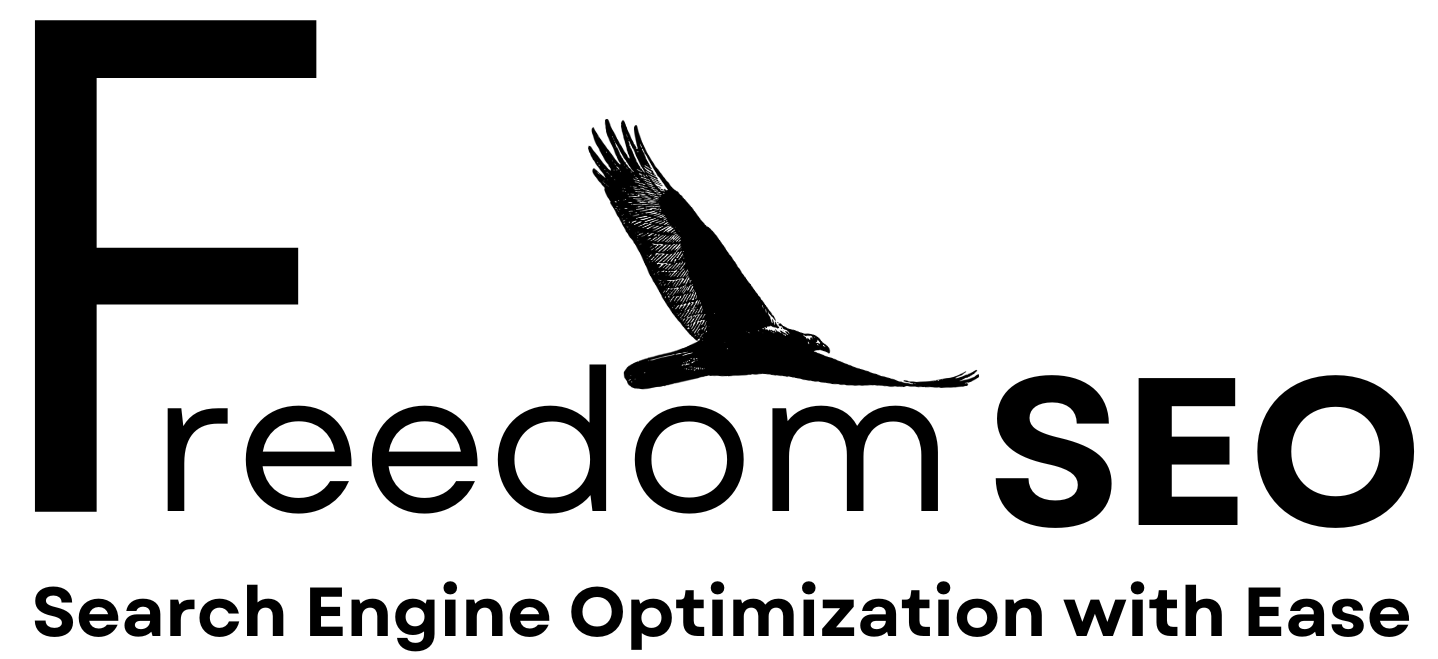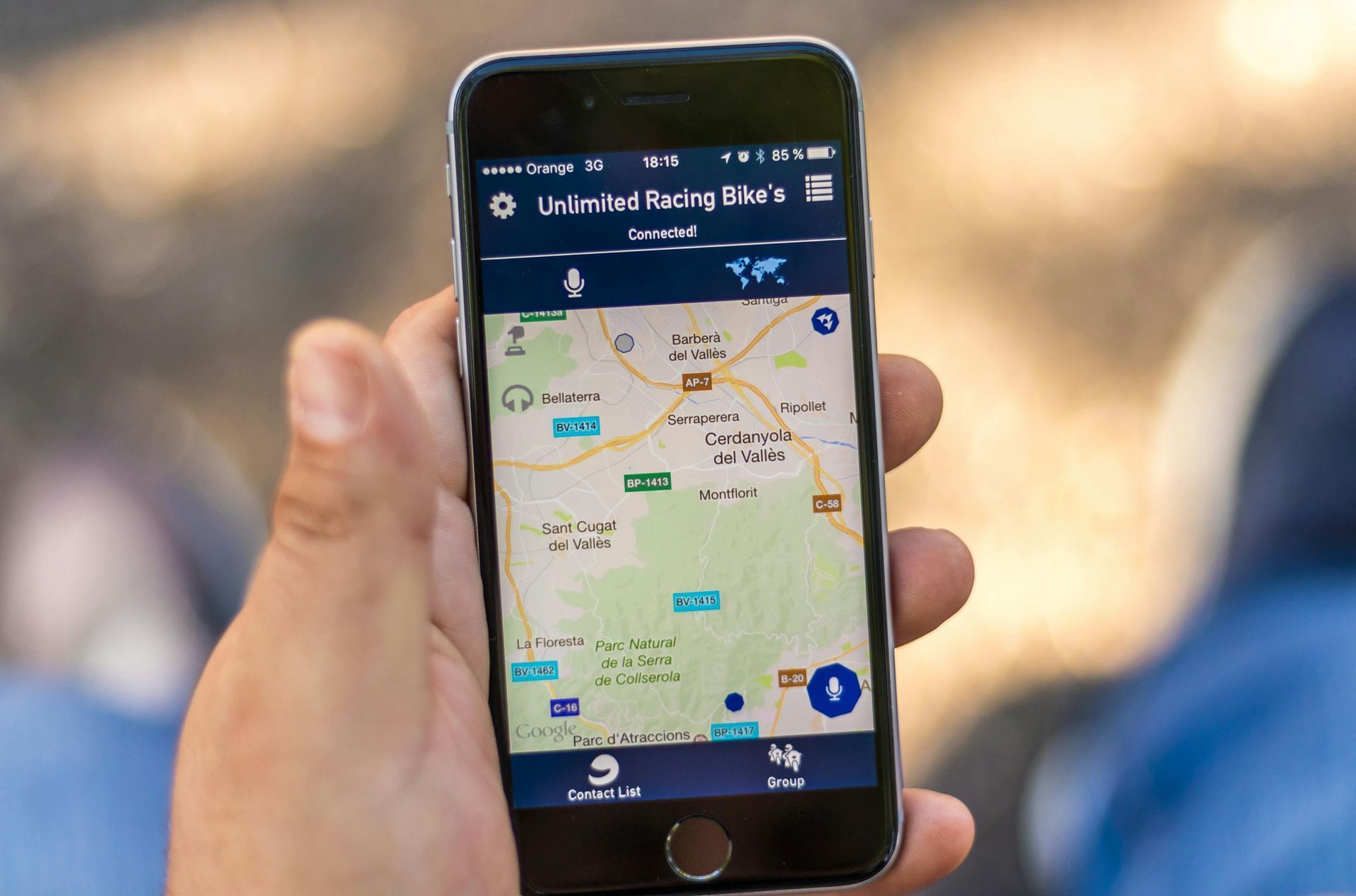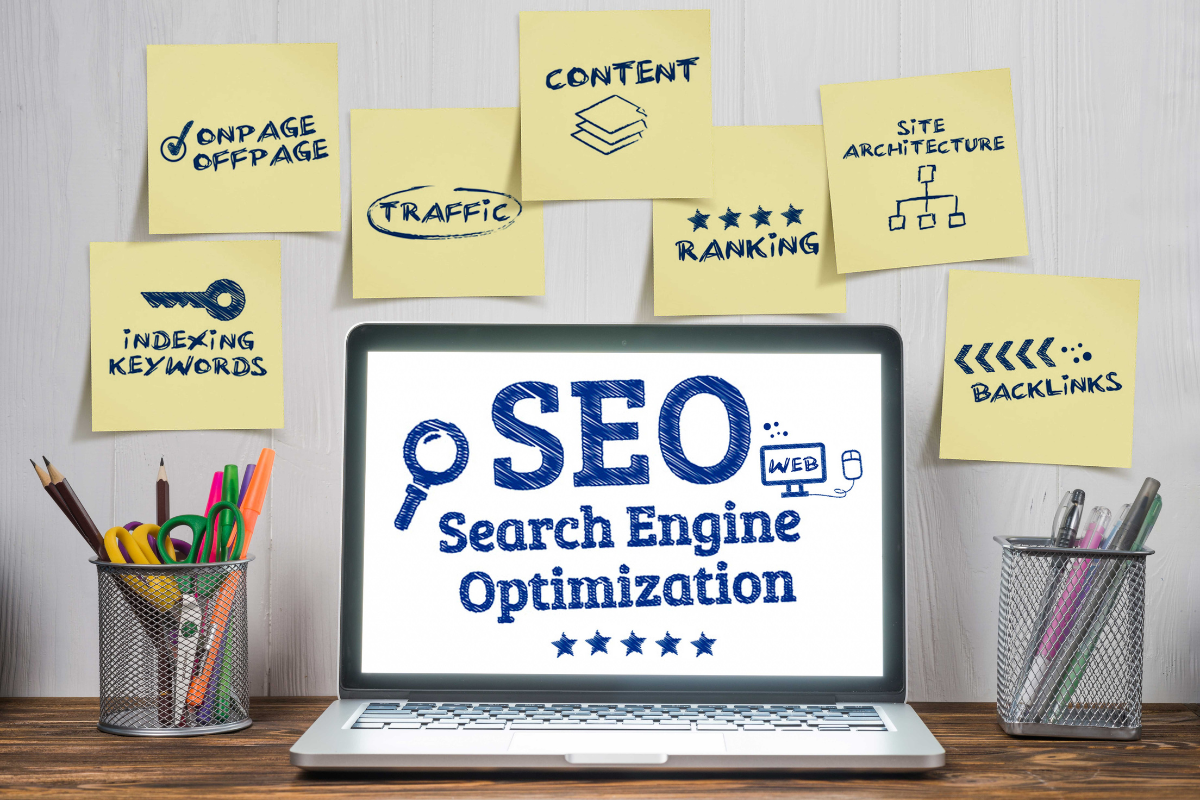SEO Penalty Recovery: Your Step-by-Step Path to Recovery

Seeing your website drop off Google after all your hard work is a gut punch no site owner wants to feel. Manual penalties are directly issued by Google and can tank your search rankings overnight . Most people scramble to fix the obvious issues, hoping a quick change will flip things back. But real recovery takes more than a Band-Aid fix. It starts with digging deeper, understanding the real cause for the penalty, and tackling it at the source so you can come back stronger than before.
Table of Contents
- Step 1: Identify The Cause Of Your SEO Penalty
- Step 2: Analyze Your Website’s Current Performance
- Step 3: Disavow Toxic Backlinks And Clean Up Content
- Step 4: Implement Recommended SEO Best Practices
- Step 5: Request Reconsideration From Search Engines
- Step 6: Monitor Your Progress And Adjust Strategies
Quick Summary
| Key Point | Explanation |
|---|---|
| 1. Identify SEO penalty causes | Determine if penalties are manual or algorithmic by examining Google Search Console and backlink profiles. |
| 2. Conduct performance analysis | Use tools like Google Analytics to assess organic traffic trends, keyword rankings, and technical issues affecting your site. |
| 3. Disavow harmful backlinks | Remove toxic links manually or use Google’s Disavow Tool to prevent harm to your site’s search rankings. |
| 4. Clean up website content | Eliminate low-quality, outdated content and focus on providing value to improve authority and search engine trust. |
| 5. Request reconsideration from Google | Submit a detailed request through Google Search Console, showcasing the corrective actions taken and improvements made. |
Step 1: Identify the Cause of Your SEO Penalty
Recovering from an SEO penalty starts with a critical detective mission: uncovering exactly why your website has been penalized. Search engines like Google impose penalties to maintain high-quality search results, targeting websites that violate their guidelines. Understanding the specific cause is your first essential step toward recovery and preventing future issues.
To diagnose your penalty, you’ll want to investigate both manual and algorithmic penalties. Manual penalties are direct actions taken by Google’s webspam team , typically triggered by explicit violations like unnatural link building, thin content, or manipulative SEO tactics. These penalties are usually communicated directly through Google Search Console, providing clear details about the specific violation.
Algorithmic penalties, however, are more subtle. These occur when automated algorithm updates like Panda or Penguin detect patterns suggesting low-quality or non-compliant website practices. Symptoms might include sudden dramatic drops in search rankings or organic traffic. Learn more about conducting a comprehensive SEO audit to help pinpoint these algorithmic shifts.
Your investigation should focus on several key areas:
- Reviewing your Google Search Console messages
- Analyzing your website’s backlink profile
- Checking your content quality and authenticity
- Examining site structure and technical SEO elements
Thoroughness is crucial. Document every finding meticulously, as this detailed assessment will form the foundation of your recovery strategy. By understanding precisely what triggered the penalty, you’ll be equipped to develop targeted corrective actions that not only resolve current issues but also prevent future penalties.
Step 2: Analyze Your Website’s Current Performance
After identifying the potential cause of your SEO penalty, the next critical step is conducting a comprehensive performance analysis. This diagnostic process helps you understand the full extent of your website’s current health and provides crucial insights into recovery strategies. Performance analysis is not just about numbers, but about understanding the story behind those metrics .
Start by gathering data from multiple sources to create a holistic view of your website’s performance. Google Search Console will be your primary tool, offering direct insights into search visibility, indexing status, and potential issues. Pay special attention to the “Security & Manual Actions” section , which might reveal specific penalty details overlooked in your initial investigation. Explore our comprehensive guide for website optimization to supplement your analysis.
Your performance analysis should encompass several key dimensions:
- Organic search traffic trends
- Keyword ranking changes
- Crawl errors and indexing problems
- Page speed and core web vitals
- Mobile responsiveness metrics
Critical tools for this analysis include Google Analytics, Google Search Console, SEMrush, and Ahrefs. Each platform offers unique perspectives that, when combined, provide a robust understanding of your website’s current state. Look for significant drops in traffic, dramatic ranking changes, or sudden increases in bounce rates that might indicate underlying penalties or performance issues.
Below is a summary table of key tools used throughout the SEO penalty recovery process, along with their main purposes and suggested use cases.
| Tool | Main Purpose | When to Use |
|---|---|---|
| Google Search Console | Identify penalties, track site health | Initial diagnosis, ongoing monitoring |
| Google Analytics | Analyse traffic and user behaviour | Performance analysis |
| SEMrush | Backlink analysis, keyword tracking | Backlink cleanup, rank tracking |
| Ahrefs | Backlink audit, content evaluation | Identifying toxic links, monitoring changes |
| Moz | Backlink and site quality insight | Supplemental backlink analysis |
| Google PageSpeed Insights | Assess and improve page performance | Implementing technical SEO best practices |
Remember, a thorough performance analysis isn’t just about identifying problems. It’s about creating a strategic roadmap for recovery. Document your findings meticulously, noting specific dates, metrics, and potential correlations with known algorithm updates or your previous SEO practices. This detailed approach transforms a potentially overwhelming situation into a clear, actionable recovery plan.
Step 3: Disavow Toxic Backlinks and Clean Up Content
Disavowing toxic backlinks and cleaning up your website’s content represents a pivotal moment in your SEO penalty recovery journey. This step involves surgically removing harmful external links and improving your content’s quality to signal to search engines that you are committed to maintaining high standards. Your goal is to demonstrate proactive website management and content integrity .
Begin by generating a comprehensive backlink profile using tools like Ahrefs, SEMrush, or Moz. These platforms will help you identify potentially harmful links that might have triggered your penalty. Discover advanced strategies for building quality backlinks to complement your cleanup efforts. Your first action should be attempting manual link removal by contacting webmasters and requesting they remove suspicious or low-quality links pointing to your site.
When manual removal proves challenging, leverage Google’s Disavow Tool within Google Search Console. This process requires creating a text file listing all problematic domain and specific URLs you want search engines to ignore. Be extremely precise and cautious during this process , as indiscriminate disavowing can potentially harm your site’s link equity.
Your content cleanup should focus on several critical areas:
- Removing thin, duplicate, or low-quality content
- Updating outdated information
- Ensuring proper keyword usage without stuffing
- Improving overall content relevance and depth
Carefully audit each page, assessing its value, accuracy, and alignment with your current SEO strategy. Rewrite or remove content that doesn’t meet high-quality standards. Remember that content cleanup is not just about elimination but enhancement. Your revised content should provide genuine value to users, demonstrating expertise, authoritativeness, and trustworthiness to search engines.
Step 4: Implement Recommended SEO Best Practices
Implementing SEO best practices is your strategic roadmap to rebuilding search engine trust and preventing future penalties. This critical step transforms your website from a potential liability into a robust, search-engine-friendly platform. Your objective is to demonstrate comprehensive technical and content excellence that aligns perfectly with search engine guidelines.
Learn advanced techniques for optimizing your website’s meta elements to enhance your overall SEO strategy. Begin by focusing on technical fundamentals that search engines prioritize. Ensure your website has a clear, logical structure with clean URL architecture, fast loading speeds, and mobile responsiveness. Implement a comprehensive XML sitemap and robots.txt file to help search engines efficiently crawl and understand your website’s content hierarchy.
Content optimization represents another crucial dimension of this recovery process. Prioritize creating high-quality, original content that provides genuine value to your audience . Each page should target specific, relevant keywords naturally without resorting to keyword stuffing. Focus on comprehensive, in-depth content that answers user questions comprehensively and demonstrates expertise in your field.
Your implementation should address several key areas:
- Technical website infrastructure
- On-page content quality
- Semantic HTML structure
- Internal linking strategy
- Page speed and performance optimization
Utilize tools like Google PageSpeed Insights, SEMrush, and Google Search Console to validate your improvements. Continuously monitor your website’s performance, making incremental adjustments based on data-driven insights.

Remember that SEO best practices are not a one-time fix but an ongoing commitment to maintaining high-quality, user-focused digital experiences that search engines reward with improved rankings.
Step 5: Request Reconsideration from Search Engines
Requesting reconsideration from search engines represents the pivotal moment in your SEO penalty recovery journey. This step is your formal communication demonstrating that you have comprehensively addressed all identified issues and are committed to maintaining high-quality website standards. The process requires meticulous documentation, transparency, and a strategic approach to rebuilding search engine trust.
Explore quick SEO improvement strategies to complement your reconsideration request. Your primary platform for this process will be Google Search Console, where you’ll submit a detailed reconsideration request. Before submission, ensure you have thoroughly documented every corrective action taken. This documentation should include specific details about the violations discovered, the exact steps you implemented to resolve them, and evidence of your comprehensive cleanup efforts.
Craft your reconsideration request with extreme care and professionalism. Be concise, honest, and direct in explaining the actions you’ve undertaken . Avoid making excuses or providing excessive justifications. Instead, focus on demonstrating your commitment to adhering to search engine guidelines. Include specific examples of how you’ve improved your website’s content quality, removed toxic backlinks, and implemented best practices that align with search engine recommendations.
Your reconsideration request should address several key elements:
- Complete resolution of all identified manual action issues
- Comprehensive documentation of corrective steps
- Evidence of improved website quality and compliance
- Commitment to maintaining future SEO best practices
After submission, exercise patience. Search engines typically take several days to weeks to review and respond to reconsideration requests. Monitor your Google Search Console regularly for updates or additional requests for information. Remember that successful reconsideration is not guaranteed, but a thorough, transparent approach significantly increases your chances of penalty removal and search ranking restoration.
Step 6: Monitor Your Progress and Adjust Strategies
Monitoring your progress and strategically adjusting your approach represents the final and ongoing phase of SEO penalty recovery. This step transforms recovery from a one-time event into a continuous improvement process . Success requires consistent tracking, analytical thinking, and willingness to adapt your strategies based on real-world performance data.
Discover advanced website optimization techniques to support your ongoing monitoring efforts. Leverage comprehensive tools like Google Analytics, Google Search Console, SEMrush, and Ahrefs to track key performance indicators. These platforms provide granular insights into your website’s search visibility, organic traffic, keyword rankings, and user engagement metrics.
Develop a systematic approach to monitoring your website’s recovery. Create a detailed dashboard that tracks critical metrics over time , allowing you to identify trends, potential issues, and improvement opportunities. Pay close attention to organic search traffic, keyword ranking changes, click-through rates, and core web vitals. Look for consistent positive movements that indicate your recovery strategies are working effectively.
Your monitoring strategy should focus on several critical areas:
- Organic search traffic volume and sources
- Keyword ranking progression
- User engagement metrics
- Technical performance indicators
- Backlink profile changes
Remember that SEO recovery is not a linear process. Some fluctuations are normal and expected. The key is to remain patient, analytical, and proactive. If you notice negative trends, quickly investigate the root causes and adjust your strategies accordingly. Continuous learning and adaptation are your most powerful tools in maintaining long-term search engine health and preventing future penalties.
The following table overviews each core step in the SEO penalty recovery process, highlighting its main objective and a key outcome for your website.
| Step | Main Objective | Key Outcome |
|---|---|---|
| Identify the Cause of Penalty | Diagnose the specific penalty and trigger | Targeted corrective plan |
| Analyse Website’s Current Performance | Evaluate organic performance and site health | Clear understanding of impact |
| Disavow Toxic Backlinks & Clean Up Content | Remove harmful links and improve content | Healthier site and improved trust |
| Implement SEO Best Practices | Optimise technical and content aspects | Strong foundation for ranking recovery |
| Request Reconsideration | Communicate fixes to search engines | Opportunity for penalty removal |
| Monitor Progress & Adjust Strategies | Track recovery and refine tactics | Sustained improvement and prevention |
Ready for a Fresh Start After a Google SEO Penalty?
Has your business felt the impact of a sudden drop in rankings or lost valuable online traffic because of an SEO penalty? You are not alone. Many Canadian businesses struggle to recover from algorithmic or manual penalties. The challenges of identifying toxic backlinks, cleaning up your content, and navigating technical SEO fixes can feel overwhelming. Your dedication to following each step in the recovery process shows you are serious about regaining your online presence. Now is the perfect time to pair your commitment with proven expert support.

Let the Freedom SEO team help you turn recovery into real results. With our 100 percent Canadian expertise , we specialize in advanced SEO audits, backlink cleanup, and ongoing optimization. We have guided businesses through every stage of penalty recovery and back to the top three on Google. Explore our local SEO Services in Canada for tailored solutions or learn more about how we handle technical site optimization with fast turnaround times. If you are determined to restore your rankings and secure your spot among the leading local businesses, contact us now at https://freedomseo.ca . Your path to a thriving online presence starts today.
Frequently Asked Questions
What are the common causes of SEO penalties?
SEO penalties can occur due to various reasons including unnatural link building, thin or duplicate content, and violating search engine guidelines. It’s essential to identify the specific cause to effectively recover.
How can I analyze my website’s current SEO performance after a penalty?
Utilize tools like Google Search Console and Google Analytics to track organic search traffic, keyword rankings, and any crawl errors. This performance data will provide insights for your recovery strategy.
What steps should I take to disavow toxic backlinks?
Start by compiling a list of harmful backlinks using tools like Ahrefs or SEMrush. Request manual removal from webmasters, and if unsuccessful, use Google’s Disavow Tool to inform search engines to ignore those links.
How do I request reconsideration from search engines after resolving SEO issues?
Create a detailed reconsideration request in Google Search Console, documenting all corrective actions taken. Be concise and professional, explaining the specific issues resolved and your commitment to following SEO best practices.
Recommended
















